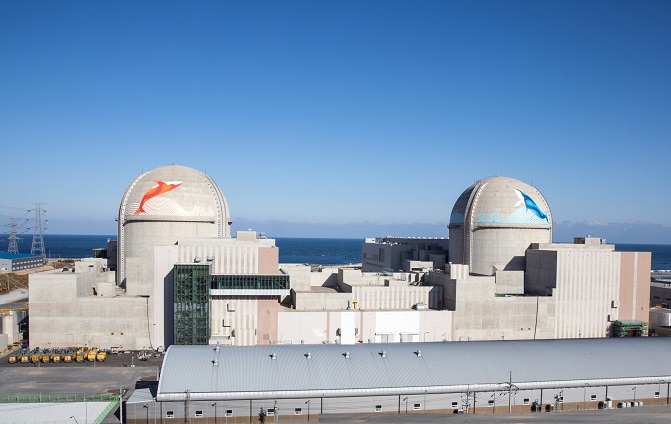
This file photo shows Shin Hanul nuclear reactors in Uljin, North Gyeongsang Province, on May 22, 2022. (Yonhap)
SEOUL, Dec. 14 (Korea Bizwire) — South Korea on Wednesday held a ceremony to celebrate the operation of its 27th nuclear reactor, as the country has striven to become a nuclear powerhouse and to better manage electricity demand.
The construction of the Shin Hanul No. 1 nuclear reactor began in 2010 in Uljin, 307 kilometers southeast of Seoul, and was completed in 2020. After years of testing, it began commercial operation last week.
It was initially scheduled to begin commercial operation in 2017, but the plan was delayed due to an earthquake in the southeastern city of Gyeongju, according to the Ministry of Trade, Industry and Energy.
Wednesday’s ceremony drew some 500 local residents and related officials. President Yoon Suk-yeol canceled his attendance due to extreme weather conditions, according to his office.
“The government will turn the nuclear power industry into a pillar that leads our exports and actively provide support so that the Republic of Korea can once again boast its status as a global nuclear energy power,” Yoon said in his congratulatory message read by Industry Minister Lee Chang-yang at the ceremony.
The Yoon government has vowed to scrap the nuclear phase-out policy pushed for by the former government and revive the sector.
The new reactor with a power generation capacity of 1,400 megawatts was built on the APR1400 technology, which is the country’s next-generation reactor model that boasts a larger capacity, a longer lifespan and cost effectiveness, according to the ministry.
The model was adopted for the South Korean-built Barakah nuclear power plant in the United Arab Emirates, it added.
South Korea has a total of 27 reactors, including the newly built one, and 25 of them are currently in operation. Three additional ones are under construction, according to government data.
South Korea seeks to expand its generation of nuclear power to more than 30 percent of its total energy creation by 2030 in a move to boost energy security and to better meet net-zero goals.
(Yonhap)




![[Feature] Picture Taking at Polling Stations Becomes a National Fad [Feature] Picture Taking at Polling Stations Becomes a National Fad](http://koreabizwire.com/wp/wp-content/uploads/2014/06/picture-taking-370x403.png)

